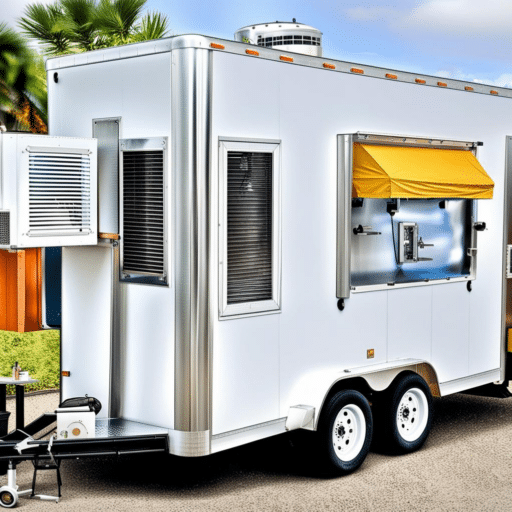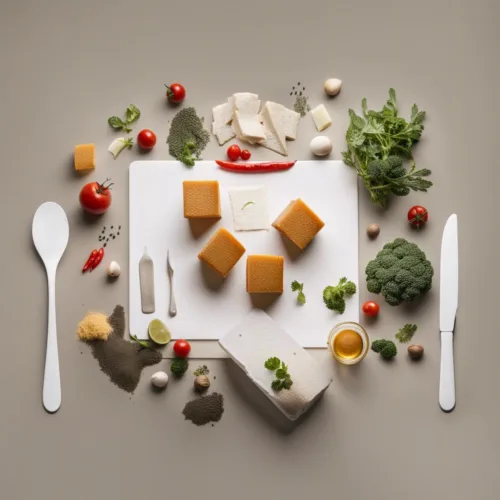Originally posted 2023-05-21 03:17:30.
Are you ready to embark on a culinary adventure like no other? Get ready to explore the fascinating world of the “Cube Rule of Food”! You might wonder what the Cube Rule of Food on Earth is now. Well, dear little adventurer, let me break it down for you in the simplest way possible.
Imagine your plate as a magical cube, each side representing a food group. Like the colors of the rainbow, each side has its own category: green for vegetables, red for meat, yellow for grains, and white for dairy. Isn’t that cool?
The Cube Rule of Food says that foods should be cooked and combined based on their colors. For a balanced meal, have at least one food from each side of the cube on your plate to get all the necessary nutrients.
But wait, there’s more! The Cube Rule of Food also teaches us about the superpowers of different food groups. Vegetables give us the power to stay healthy and robust, meat gives us the power to build muscles, grains give us the ability to have energy for playtime, and dairy gives us the power to have strong bones.
Think of it like a team of superheroes joining forces to make you the world’s strongest, healthiest, and happiest 5-year-old! Each food group has its unique role, just like the superheroes you love.
So, my little culinary explorer, get ready to embrace the Cube Rule of Food and unlock the secret to a balanced and super-powered plate of deliciousness. It’s time to create your food adventure and become the superhero of your plate! Are you ready? Let’s dig in!
Table of Contents
- A Revolutionary Perspective of Culinary Categorization: Unveiling the Cube Rule of Food
- Delving into the Fundamental Categories of Cube Rule of Food: A Comprehensive Analysis
- Exploring the Versatility of Cube Rule Combinations for Optimal Gastronomic Experience
- Mastering the Art of Food Pairing: Effective Strategies for Delightful Culinary Creations
- Q&A
- Final Thoughts
A Revolutionary Perspective of Culinary Categorization: Unveiling the Cube Rule of Food
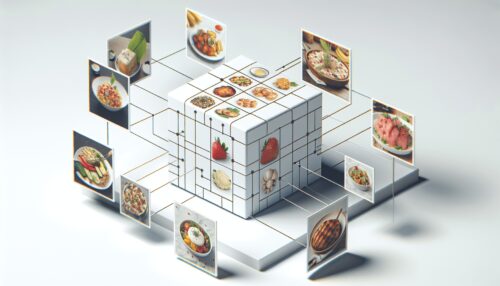
The Cube Rule of Food categorizes food based on shape. It acts as a code to help us identify the type of food by its shape. It simplifies the classification of all the food in the world.
Let me explain it to you using some examples. Think about a pizza, which is usually round. According to the Cube Rule, round foods are called “Pie.” So, pizza would fall under the category of “Round Pie.”
Let’s talk about sandwiches. They’re made with two slices of bread and a filling. Sandwiches are considered “Two-Crust Pot Pie” per the Cube Rule because they have two bread layers acting as crust.
Sushi is small, raw fish or vegetable bites wrapped in seaweed and rice. It falls under the “Sushi Pocket” category, representing wrapped food with one ingredient inside.
Additionally, you can see how the Cube Rule helps us understand food categories based on their shape. It’s like a secret code that food enthusiasts can use to talk about food in a fun and unique way. Moreover, it’s a revolutionary perspective that adds excitement and depth to our understanding of culinary categorization.
In conclusion, the Cube Rule of Food is a clever way to categorize different types of food based on their shapes. It helps us understand and talk about food creatively and uniquely. So next time you’re enjoying a meal, consider what category it falls into according to the Cube Rule!
Delving into the Fundamental Categories of Cube Rule of Food: A Comprehensive Analysis
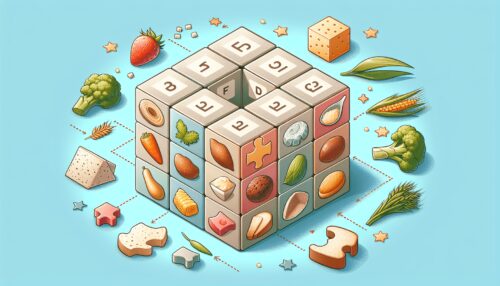
In the exciting world of food, something called the “Cube Rule of Food” helps us understand what category different foods belong to. Let’s imagine that food is like a puzzle; this rule allows us to put the pieces in the right place!
According to the Cube Rule, we can identify the category of each food based on where its structural starch is located. Now, you might be wondering, what in the world is structural starch? Starch is a type of yummy thing that makes our food thick and gives it a yummy texture. The Cube Rule helps us determine what kind of food it is by looking at where this starchy deliciousness is.
For example, where do you think the structural starch is when we think about a hot dog? Is it on the sides like a sandwich or wrapped around like a taco? The Cube Rule says that a hot dog is more like a taco because of the structural starch around it, just like a tortilla wraps up a taco filling. Isn’t that cool?
Moreover, the Cube Rule can help us figure out other food categories. It’s like a secret code for food! For instance, it tells us that sandwiches have structural starch on the sides, like two slices of bread hugging the filling. And guess what? Pizza is in its particular category because the structural starch is on the bottom, in the crust!
So, thanks to the Cube Rule of Food, we can have fun figuring out what kind of food we’re eating, whether it’s a sandwich, a taco, or even a pizza. It’s like a game that makes us think about food in a whole new way. Cool, right?
Exploring the Versatility of Cube Rule of Food Combinations for Optimal Gastronomic Experience
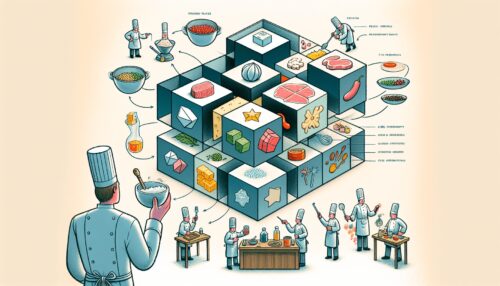
Regarding food, the cube rule is like a secret code that helps chefs create fantastic flavor combinations. It’s like a puzzle where you mix and match different ingredients to make something delicious. Let me explain it to you!
So, Picture a plate of food as a canvas. The cube rule shows how flavors and ingredients can blend to form a culinary masterpiece, like building blocks.
Let’s discuss cube rule combinations and balancing flavors. For instance, sweet, salty, sour, bitter, and umami. Like colors on a palette, mixing these flavors creates something extraordinary.
You have grilled chicken. You can add barbecue sauce for flavor or Parmesan cheese for a savory touch. It’s like adding spices to your dish!
But the cube rule is not just about flavors. It’s also about textures. Imagine you have a plate of crispy fried chicken. You could pair it with a creamy coleslaw for a contrast in textures. It’s like combining soft and crunchy elements to create a harmonious blend.
The cube rule of food explores flavors and textures to create an ultimate gastronomic experience. It’s like being a chef and artist simultaneously. We can create visually appealing and delicious dishes by understanding how ingredients work together.
The cube rule of food is a magical formula for chefs to unlock their culinary creations. It’s about mixing flavors and textures to create something extraordinary. So, when you sit down for a meal, explore cube rule combinations for an optimal gastronomic experience!
– Cube rule helps chefs create fantastic flavor combinations
– It’s like a puzzle where different ingredients can be mixed and matched
The cube rule is all about finding the right balance of flavors and textures
– By understanding the cube rule, dishes can be both delicious and visually appealing
Mastering the Art of Food Pairing: Effective Strategies for Delightful Culinary Creations
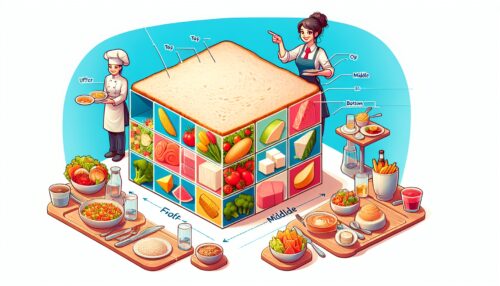
The Cube Rule of Food is a fun way to understand and classify different kinds of food based on where the starch is located. Imagine your plate is a great giant cube. Now, let’s talk about three other cube areas – the top, the middle, and the bottom.
In the top area, we have what we call salads. These foods don’t have starch or starch spread out all over. For example, think of a yummy and healthy salad with colorful vegetables like lettuce, tomatoes, and carrots. That’s a salad because there’s no concentrated starch, like bread or pasta.
In the middle area of the cube, we find sandwiches. These are delicious meals with starch on the sides. Think of your favorite burgers or sandwiches like grilled cheese. The bread is on the sides, and that’s what makes it a sandwich.
Now, let me help you improve the flow of your text by adding some transition words. Here’s where it gets exciting. In the bottom part of the cube, we have our tacos. These are foods where the starch is on the bottom. For instance, you know those tasty tacos you love with the crunchy tortilla shell or maybe even soft ones? They have the starch on the bottom, just like the filling in a taco.
So, the Cube Rule of Food helps us understand that food can be categorized based on the starch’s location. We have salads without concentrated starch, sandwiches with the starch on the sides, and tacos with the starch on the bottom. It’s fun to think about and identify different kinds of food!
Q&A About the Cube Rule of Food
Q: What is the cube rule of food?
A: The cube rule of food is a creative concept that explores innovative ways of preparing, separating, further processing, preserving, chilling, packaging, and freezing various meat, poultry, and other food products. By breaking down food components into cubes, this rule encourages us to think outside the box and reimagine traditional food presentations and combinations.
Q: How can the cube rule of food be applied in everyday cooking?
A: Try the cube rule of food for a creative twist in everyday cooking. Cube your ingredients and arrange them artfully on a skewer for a visually stunning presentation. You can also use cubed fruits and vegetables to make unique salads or refreshing kebabs. The possibilities are endless!
Q: What are some benefits of using the cube rule of food?
A: The cube rule of food promotes innovative techniques and presentations, encourages efficiency in portion control and cooking times, and invites us to experiment with diverse flavor combinations and textures.
Q: How does the cube rule of food contribute to sustainable cooking?
A: The cube rule of food emphasizes efficient ingredient use, reducing waste, and promoting sustainable agriculture. It also makes plant-based meals more appealing, encouraging sustainable dietary choices.
Q: Can you provide examples of dishes that demonstrate the cube rule of food?
A: You can apply the cube rule of food to dishes like a modern Caprese salad with cubed tomatoes, mozzarella, and basil, a vibrant fruit salad, or skewers with cubed marinated meats and veggies.
Final Thoughts
In conclusion, understanding the Cube Rule of Food can revolutionize how we approach and enjoy our meals. We can create harmonious and balanced flavor combinations by recognizing the three-dimensional nature of ingredients and their cooking behaviors. This culinary concept allows us to explore endless possibilities in the kitchen, tapping into our creativity while maintaining a neutral tone. So, why not embrace the Cube Rule of Food and embark on a culinary adventure that will tantalize our taste buds and elevate our dining experiences? Let your imagination run wild as you savor the delightful flavors that await you in every bite. Bon appétit!
